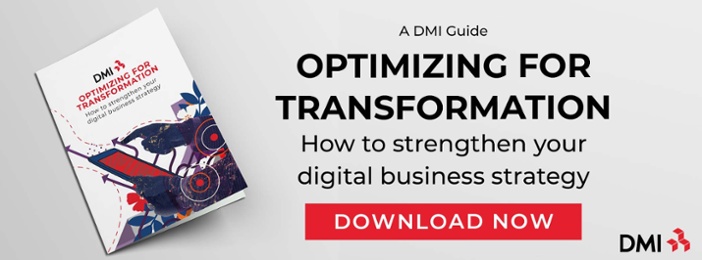
Fall Planning: How to Prepare & Prioritize for Next Year’s Capital Expenditure Cycle
Fall is a wonderful time of year. The leaves begin to change, football season starts and the holidays are just around the corner. However, it’s also the time you’ve got to line up your priorities and budget for next year’s capital expenditure projects. It'll be here before you know it!
The best advice we can give you is to develop your CapEx plan early — well before it’s time to submit the necessary documents and get buy-in from key stakeholders. If your organization is like most, you’ll need support at the highest levels to fund projects.
The key for the 2022 capital expenditure cycle will be to embrace agile and not just on the delivery side. While the projects with the highest ROI tend to be those that enhance the customer experience, there are always projects you need to undertake to remain competitive and achieve digital optimization.
Using PMO & OPM Strategies
PMO stands for Project Management Office. Whether you have a department dedicated to project management or you’re doing it on your own, PMO principles can support CapEx prioritization and planning.
The goal here is to create a process that ensures your projects are accurately and objectively judged in a standardized way. This means everyone participating in CapEx planning should be using the same forms and documentation while providing similar required information. This standardization will help guide the planning process, create the basis for managing projects, and support accurate assessment of outcomes against goals.
Additionally, remember to:
- Set the governance for how projects will be selected.
- Create the roadmap and deadlines.
- Allow all business units to utilize the framework to provide ideas and requests.
- Require every submission to provide the needed information for assessment.
- Ensure there are measurement plans in place to ensure that the proposed benefits will be realized.
Organization project management (OPM) is a framework used to align projects with organizational strategy and objectives. Before investing in capital projects, organizations also need to demonstrate how IT investments further company goals and justify expenditures.
Justifying CapEx Projects
Start the justification process with a lightweight, two-page business case. There are plenty of tools and templates online to use if your company doesn’t have a set form.
As you’re creating your documentation, think like a salesperson. Your job will be to explain the benefits of what you are proposing and sell prospects on its value. For example:
- What does the business stand to gain?
- Will it measurably increase revenue?
- Will it reduce operating costs and by how much?
- Will it lead to increases in market share?
For each project, there should be a set of goals and outcomes. Part of the budgeting process should include establishing these goals, and aligning them to the stated strategic goal of the larger organization. The justification for projects is imperative to selling your finance department on the value.
Digital optimization and digital transformation take careful planning. For organizations, deciding which projects should move forward at the expense of others can be challenging. If business units follow your governance models and provide the information to justify their projects, it will make prioritization easier.
Prioritizing in an Objective Way
Too many times, those speaking the loudest are prioritized — but that’s a poor way to decide which projects get funding. As you progress in your capital planning, you will need a way to weigh projects to determine priorities that put the needs of the organization first.
One effective way to do this is by introducing objective measures, such as Weighted Shortest Job First (WSJF), which has become a standard model in the Scaled Agile Framework (SAFe) practices of those adopting lean and agile management principles. WSJF is a good measure for initial prioritization, and there are several templates readily available online.
WSJF = Cost of Delay divided by Job Duration
The cost of delay is an estimation of the value of not moving forward with a particular project. It’s typically broken down into three components:
1. Business Value
- What is the relative value to the customer or business?
- What is the revenue impact?
- Is there a cost if we delay?
2. Time Criticality
- Does the customer or business value decay over time?
- Will customers wait if we delay or find another supplier?
- Is there a fixed deadline for completion?
3. Risk Reduction & Opportunity Enablement
- Does this project reduce risk?
- Will this project enable new business opportunities?
- What else do we learn from this project that will help our organization?
Calculating job duration can be difficult as it depends on resource levels, personnel and skill sets, dependencies and other project commitments.
Once you have these two measures, divide the cost of delay by job duration. Lower-numbered projects should be higher priorities for investment.
Overcoming Capital Expenditure Challenges
Capital expenditure planning can get derailed in a variety of ways, but one of the biggest challenges is getting everyone on the same page when it comes to setting governance, priorities and assessments. Without a solid foundation, business units may prioritize their projects above others even when other projects are more aligned with company objectives.
Getting everyone to agree on a platform that injects objectivity into the process and evaluates CapEx spending based on the projects that will achieve company goals is necessary to maximize IT expenditures. It can also help morale by ensuring everyone knows the overarching goals.
DMI is a digital transformation partner and service provider for more than 100 of the Fortune 1000 companies and all 15 US federal executive departments. We help organizations employ the right PMOs to set governance, manage forms and templates and implement the digital assets needed for efficient project and portfolio management.
With an agile mindset and two decades of experience in delivering industry-leading and customer-centric solutions, DMI can help you create a capital expenditure planning process to keep your business focused on its objectives.
“It’s August,” says Geoff Lynch, Director of Business Solutions at DMI. “If you haven’t started your CapEx planning, now’s the time. Many organizations are still shaking off the effects of COVID and may not have capital planning on their mind, but it’s crucial to the long-term health of your organization to get your digital business strategy ready for the future.”
Get in touch with DMI and let us show you a better way to prepare and prioritize for next year’s CapEx cycle.
![[FREE RESOURCE] 10 Technology Trends You Need to Know](https://no-cache.hubspot.com/cta/default/8444324/70f3087e-225d-45f6-bb20-e5ed06bf0834.png)
